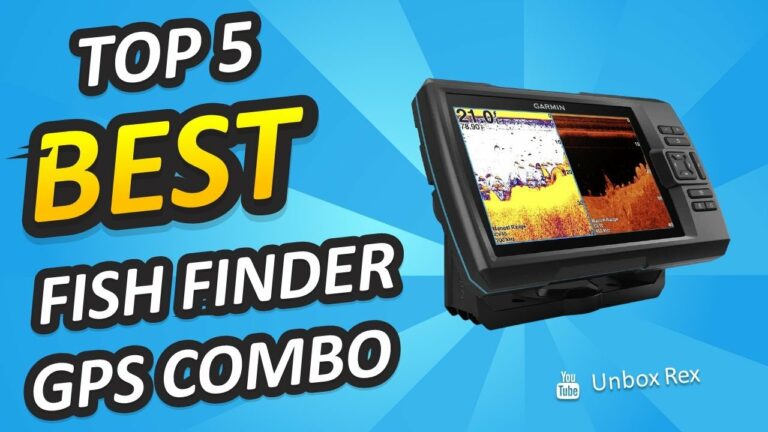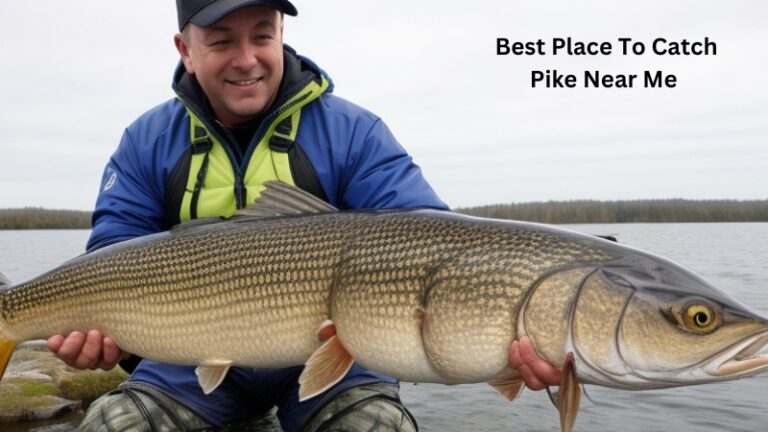The Ultimate Guide: Best Tide For Fishing
Are you looking to hook the fish of your dreams? Curious about the optimal fishing time for a fruitful outing? Look no further!
This article delves into the ideal tide conditions for fishing. Whether you’re an experienced angler or just starting, understanding tides can significantly enhance your fishing adventure.
Let’s examine the connection between tides and fish behavior, and discover ways to maximize your fishing success. Prepare to level up your skills and reel in fish like a seasoned pro!
What is the Best Tide to Fish:
Fishing and Tides: A Match Made in Nature
Fishing is a popular hobby that connects us with nature and provides excitement. Whether you’re experienced or new, knowing how tides affect fishing is important.
Tides determine the ideal time to fish and improve your chances of catching something.
In this guide, we’ll discuss the impact of tides on fishing and the best tide to fish for different species.
The Basics: Understanding Tides
Tides occur due to the gravitational forces of the moon and sun, causing the movement of sea levels. The moon has a more significant influence on tides because of its proximity to Earth.
As the moon orbits our planet, it exerts a gravitational pull that leads to the formation of bulges in the water, resulting in high and low tides.
During a new or full moon when the moon, Earth, and sun align, the combined gravitational forces produce spring tides, characterized by higher high tides and lower low tides.
On the other hand, neap tides occur when the moon and sun are at right angles, leading to less noticeable changes in sea levels.
Types of Tides
It’s important to familiarize yourself with the different types of tides and their impact on fishing:
- High Tide: The highest point of water during a tidal cycle.
- Low Tide: The lowest point of water during a tidal cycle.
- Slack Tide: The period between high and low tides when the current is minimal.
- Incoming Tide: The transition from low to high tide.
- Outgoing Tide: The transition from high to low tide.
Tides and Fishing: Finding the Optimal Time
Having a clear understanding of the correlation between tides and fishing is essential for anglers aiming to enhance their fishing endeavors.
Various types of fish exhibit preferences for particular tide conditions. Let’s examine the impact of high and low tides on fishing in more detail.
High Tide Fishing
High tide periods often offer favorable conditions for fishing. Here’s why:
- Better Accessibility: High tides allow anglers to navigate shallow areas that are otherwise difficult to reach during low tides.
- Covered Structures: High tide provides more cover for fish as submerged structures such as rocks, reefs, and vegetation become accessible to predatory species.
- Bait Availability: The rising water during high tide brings in a fresh supply of bait, attracting hungry fish seeking an easy meal.
While high tide can be beneficial, fish tend to disperse in search of food and shelter. To improve your chances of success, try casting near structures or using lures and baits that imitate prey.
Low Tide Fishing
Low tide periods present a unique set of challenges and opportunities for anglers. Here’s why low tide fishing shouldn’t be overlooked:
- Concentration of Fish: As water recedes during low tide, fish are concentrated in deeper pools, channels, or tidal creeks, making them easier to locate and target.
- Structure Visibility: Exposed structures during low tide, such as rocks, drop-offs, and oyster beds, can be easily identified and fished around.
- Feeding Opportunities: Low tide reveals food sources like sandbars, seagrass beds, and mud flats, attracting hungry fish looking for prey.
During low tide, it’s important to be aware of shallow water hazards and protect marine habitats. Also, adapt fishing methods to mimic the surroundings and target fish in smaller concentrated areas.
Factors Impacting Tide and Fish Behavior
While tides play a vital role in fish behavior and feeding patterns, several other factors can influence fish activity. Understanding these factors will further enhance your fishing success.
Weather Conditions
Weather conditions heavily influence fish behavior and feeding habits. Factors such as temperature, wind, and cloud cover can impact the effectiveness of tides. Consider the following:
- Temperature: Fish are more active during warmer water temperatures. Warmer water increases their metabolic rate and appetite, making them more likely to bite.
- Wind: Wind can affect fish behavior by stirring up the water, increasing oxygen levels, and creating a ripple effect that attracts fish. Additionally, wind can push baitfish closer to shore, bringing predatory fish with them.
- Cloud Cover: Overcast skies during high tide can provide fish with a sense of security, making them more willing to venture out and feed.
Time of Day
Fish behavior is also influenced by the time of day. Understanding the optimal feeding times for your targeted species can significantly improve your chances of success. Consider the following:
- Early Morning and Late Evening: Many species of fish are more active during these times, as they coincide with periods of low light and cooler temperatures.
- Midday: During midday, when the sun is at its peak, fish tend to retreat to deeper, cooler waters. However, this may vary depending on the targeted species and environmental conditions.
Additional Tips for Fishing Tides
To maximize your fishing experience during different tides, consider the following expert tips:
1. Research Tide Charts
Using tide charts for your fishing location can assist in planning fishing trips efficiently. These charts offer useful details on high and low tides, helping you decide the best fishing times.
2. Experiment and Observe
Each fishing spot has its distinct characteristics, and the behavior of the fish can differ as well.
By trying out different tide conditions and carefully observing the outcomes, you can start to recognize patterns and enhance your overall fishing approach.
3. Use Technology to Your Advantage
Take advantage of technology to access up-to-date data on tides, weather conditions, and fish behavior.
Utilize smartphone apps and fishing websites to gather valuable information that can assist you in planning your fishing excursions.
4. Don’t Discount Other Factors
Although tides hold significance, it is vital to take into account additional elements such as water visibility, bait availability, and the particular behaviors of the fish species being pursued. These factors greatly influence the likelihood of a successful fishing experience.
5. Seek Local Knowledge
Gaining insight from local fishermen or paying a visit to nearby bait shops can offer valuable information on the most favorable tide conditions for fishing in a particular area.
Seasoned locals can provide personalized guidance based on their experience and knowledge of the fishing spot you have selected.
Faqs for Best Tide For Fishing:
1. What is the best tide to fish?
The best tide for fishing depends on factors like the target species and fishing location.
Many anglers find that fishing during moving tides is most productive. This includes the incoming tide (flood tide) and outgoing tide (ebb tide).
These tidal movements create currents that stimulate fish feeding behavior, increasing their activity and bite rate.
Considering these tidal movements, along with weather, time of day, and seasonal patterns, is essential for maximizing fishing success.
2. How does the tide affect fishing?
Tides greatly affect fishing as they impact fish movement and behavior.
Fish move closer to the shoreline during incoming tides to benefit from rising water levels and abundant food.
Conversely, during outgoing tides, fish move away from the shoreline, following the receding water and feeding along current lines.
Knowing these patterns helps anglers choose the right position and techniques for successful fishing.
3. Can you fish during low tide?Can you fish during low tide?
While fishing during low tide can be challenging, it is still possible to catch fish.
During low tide, water levels are lower, and fish may retreat to deeper areas or seek refuge in structures such as rocks, reefs, or submerged vegetation.
It can be advantageous to target these areas where fish may be concentrated.
4. Is high tide better for fishing?
High tide offers great fishing chances, especially in areas with structure or when targeting specific species.
Fish often come closer to shore as the water levels rise, making them more accessible to anglers.
Stronger currents during high tide can also lure baitfish and other prey, leading to more feeding activity among larger predatory fish.
However, fishing success during high tide depends on factors like location, weather conditions, and the behavior of the target species.
5. Are certain fish more active during specific tides?
Yes, certain fish species tend to be more active during specific tide movements.
For example, species like striped bass and redfish often feed aggressively during the outgoing tide, taking advantage of the moving water to ambush prey.
On the other hand, species like snook and tarpon are more commonly associated with the incoming tide as they tend to move closer to the shoreline to feed.
However, it is essential to research the behavior patterns of the specific fish you are targeting, as preferences can vary depending on the location and environmental conditions.
6. Does the best tide for fishing vary by location?
Yes, the best tide for fishing can vary depending on the location you are fishing in.
Different geographical features, such as estuaries, rocky coastlines, or sandy beaches, can influence how fish respond to tidal movements.
It is advisable to research and gather local knowledge about the fishing area you plan to visit.
Local fishing reports, information from bait and tackle shops, and insights from experienced anglers familiar with the specific fishing spots can help you determine the most productive tides for fishing in that particular location.
Final Thoughts
The best tide for fishing depends on factors like species, location, and time of year. Understanding these factors can improve the fishing experience. Tides affect fish behavior and feeding patterns.
During incoming tides, fish follow baitfish and actively feed. Outgoing tides can concentrate fish in choke points, making them easier to catch. Knowing the tidal patterns and their impact on fish behavior increases the chances of success. When planning your next fishing trip, consider the best tide to optimize your chances of success.

